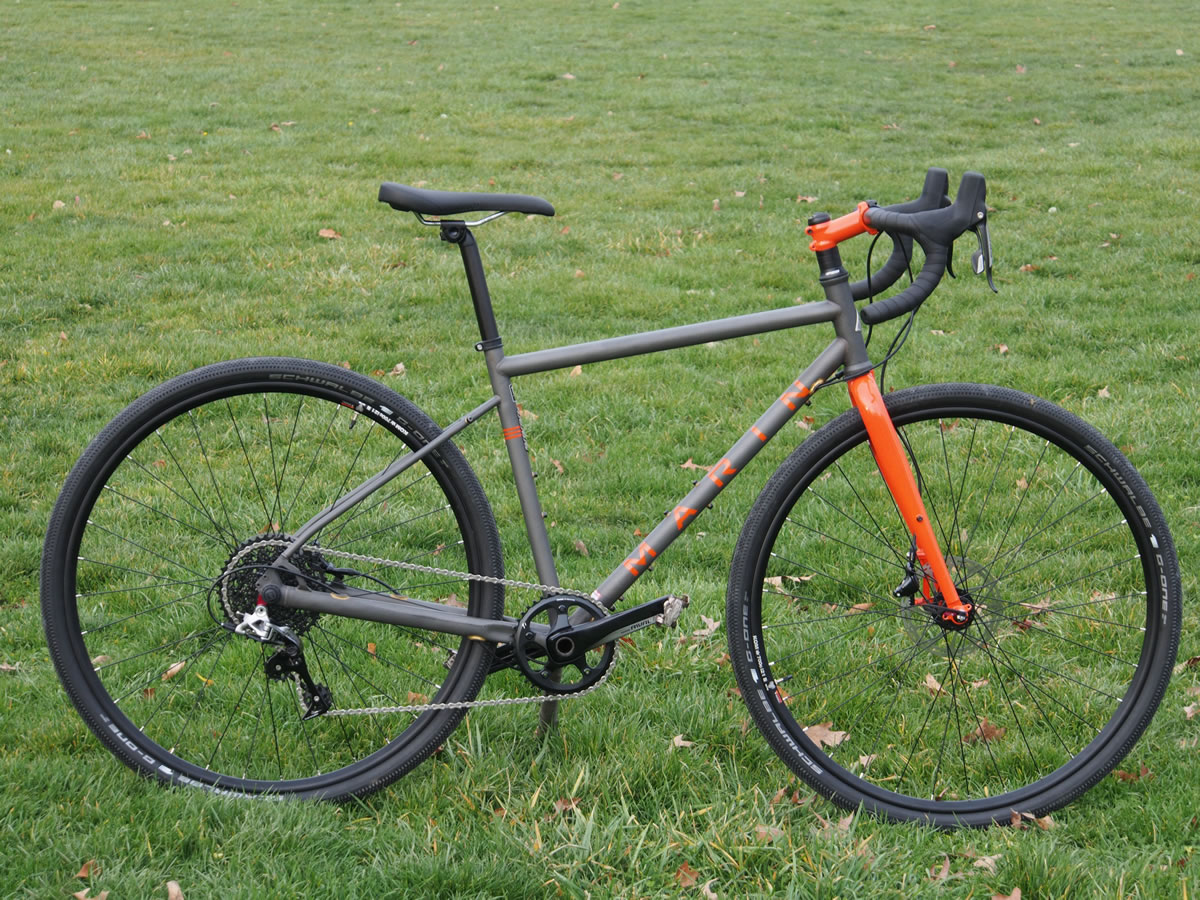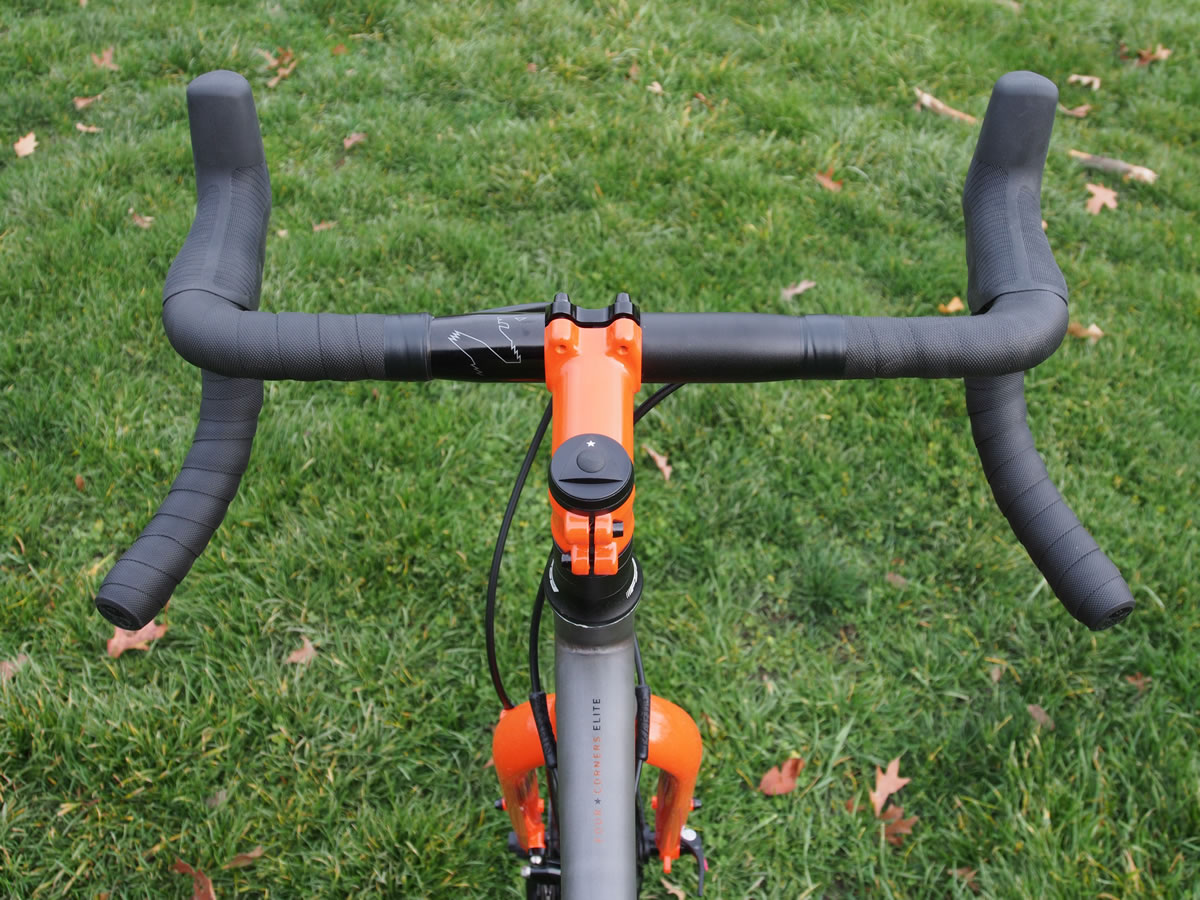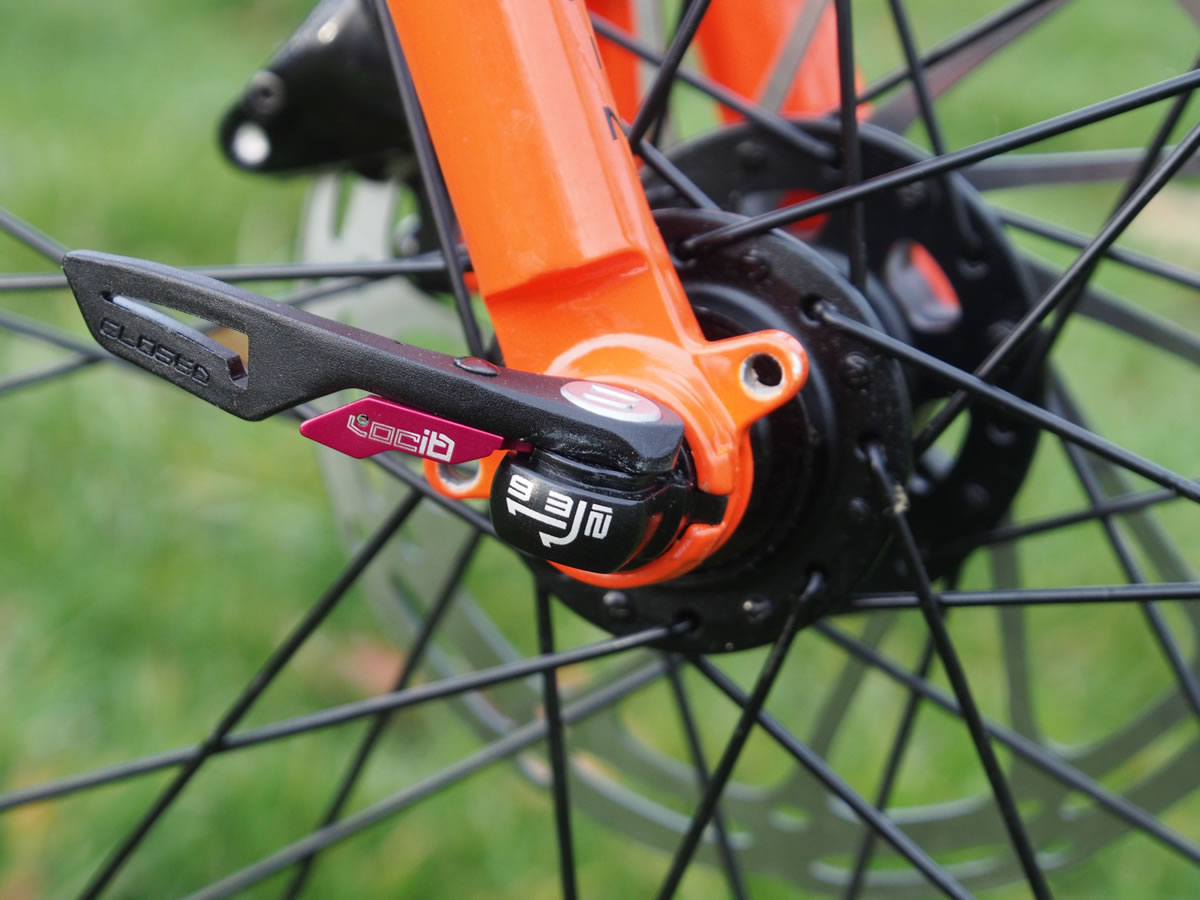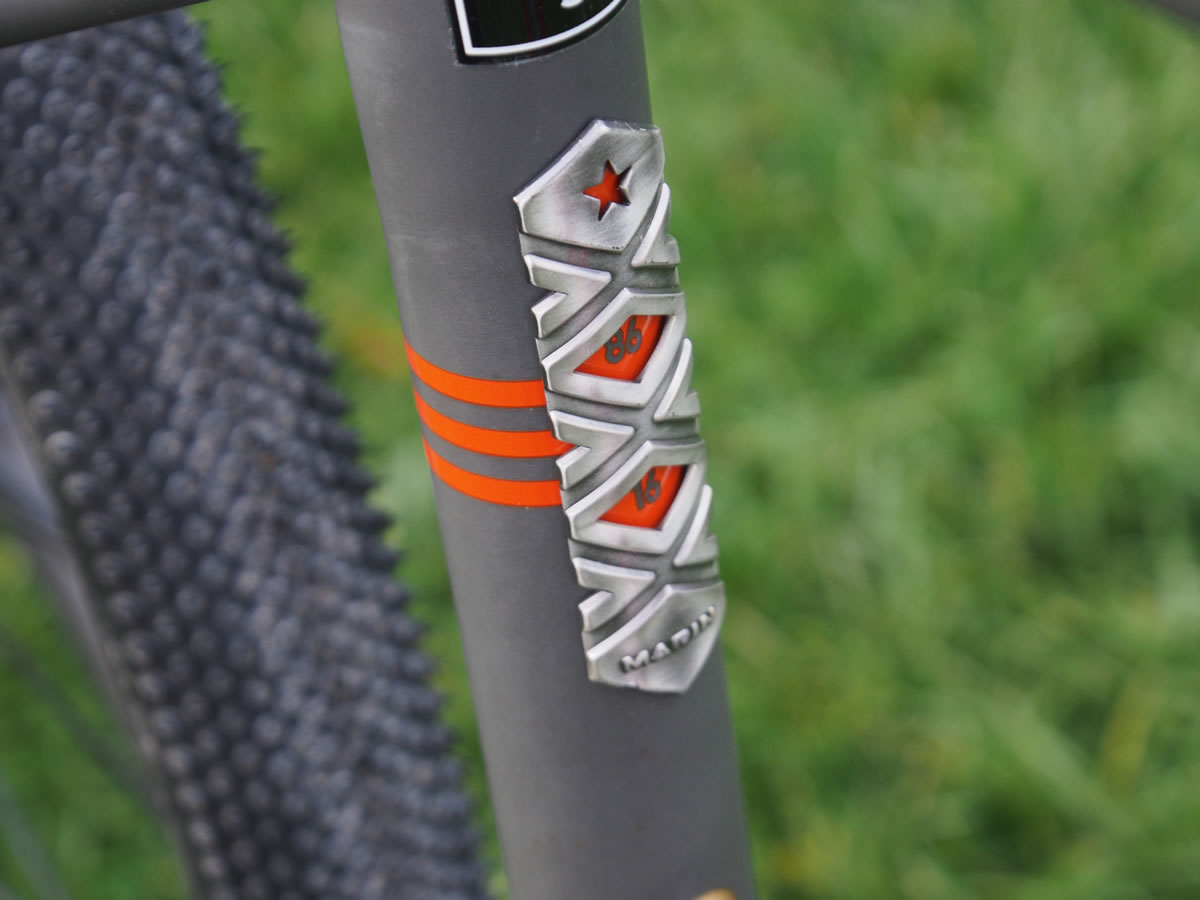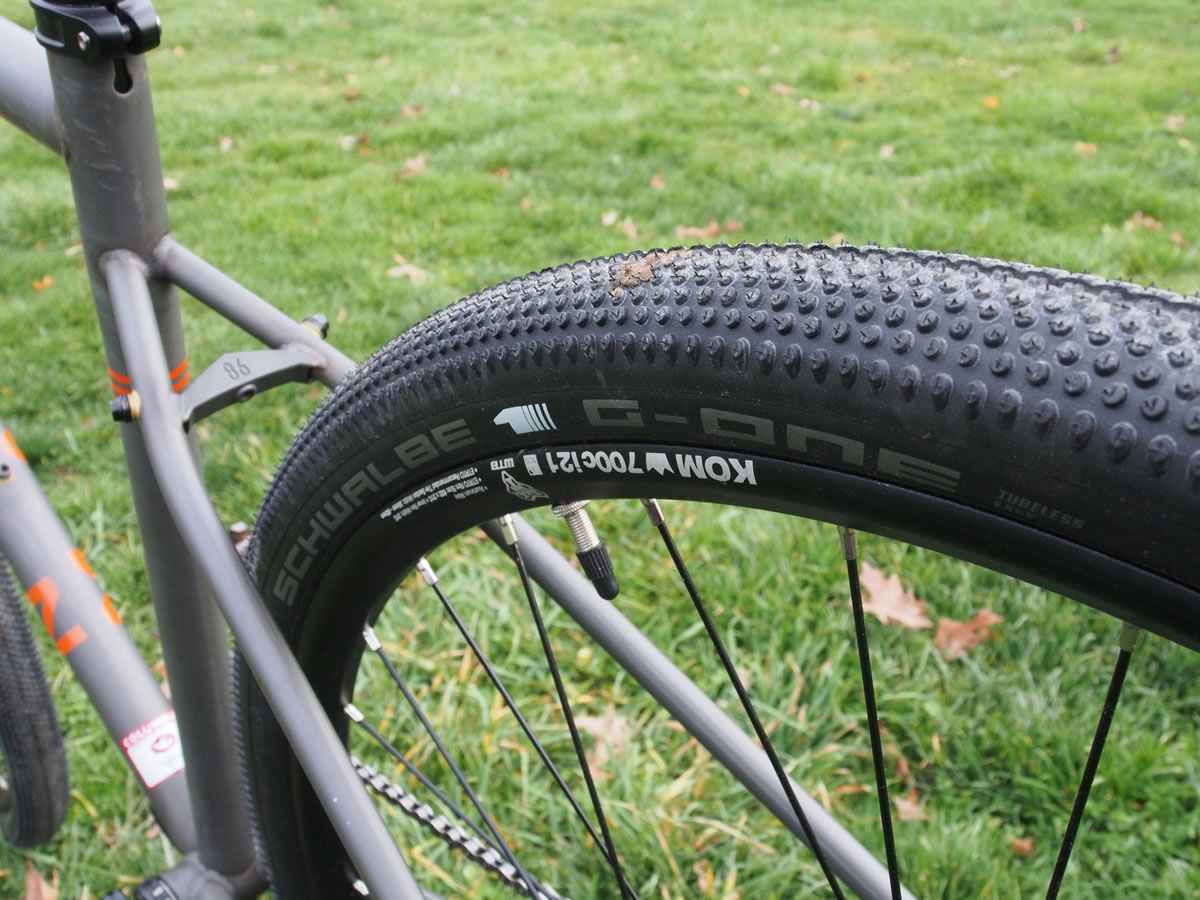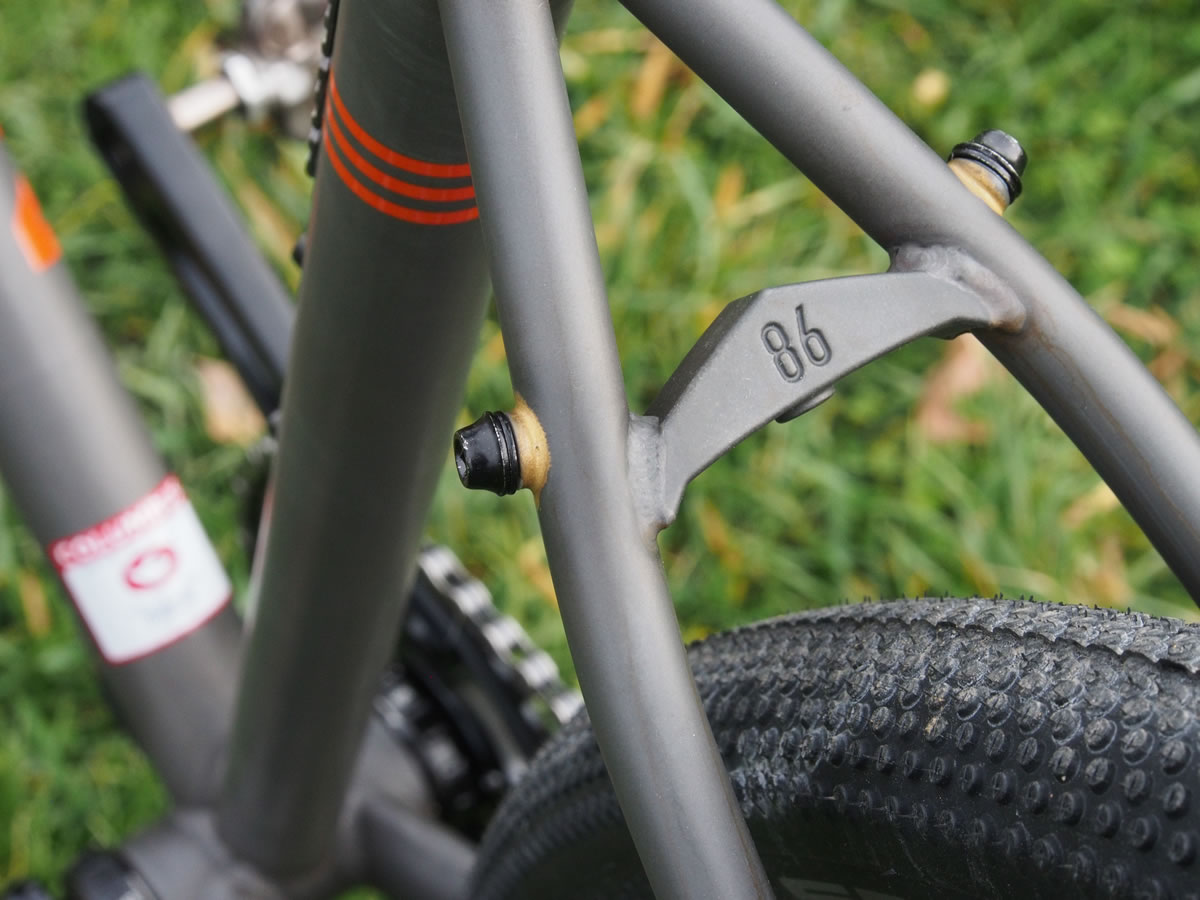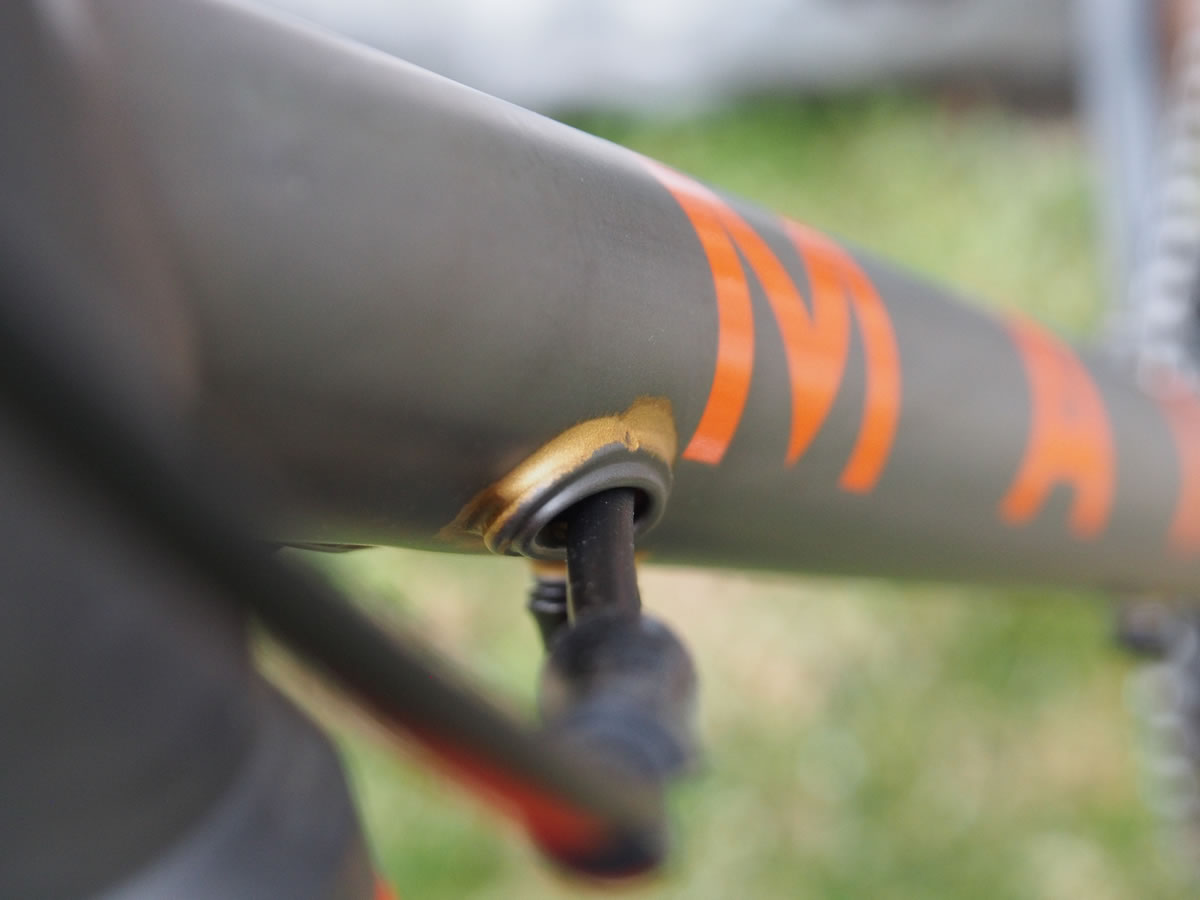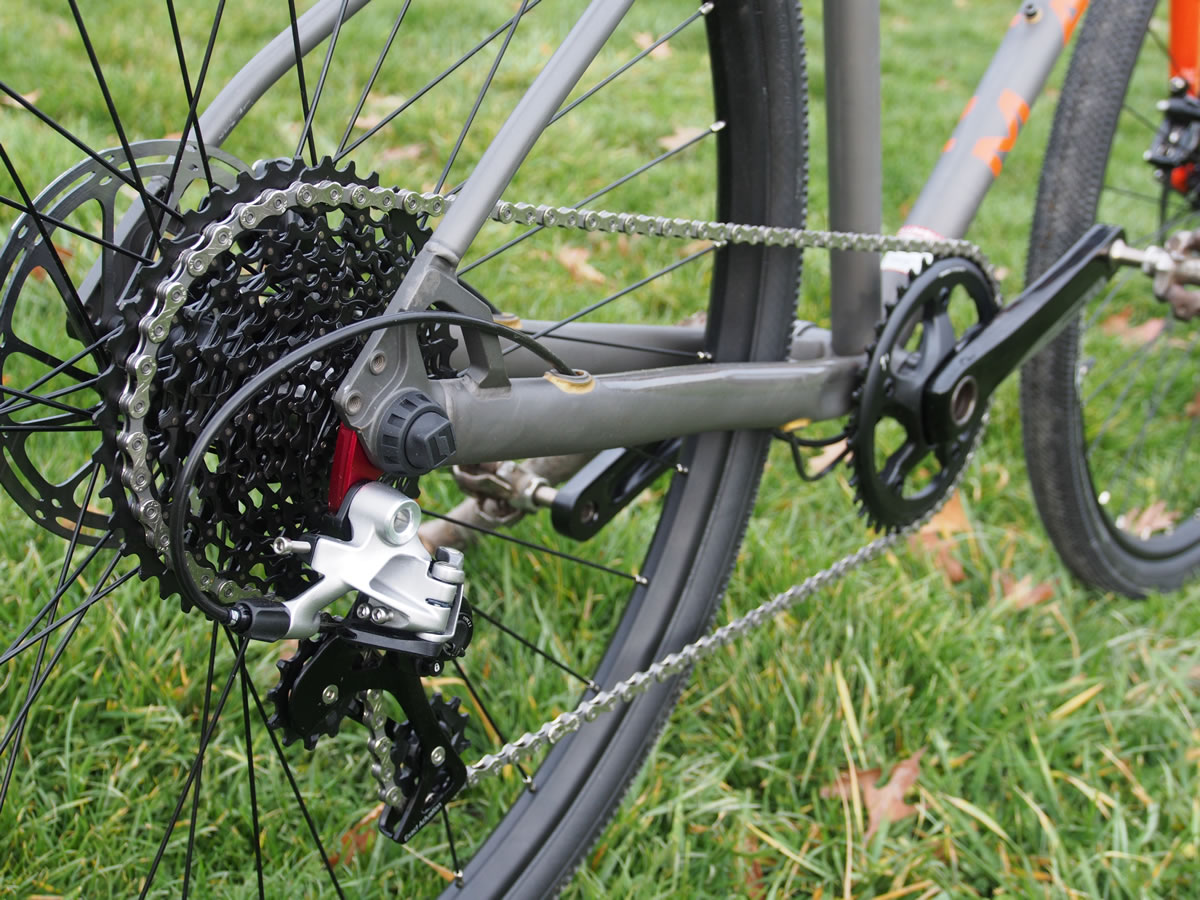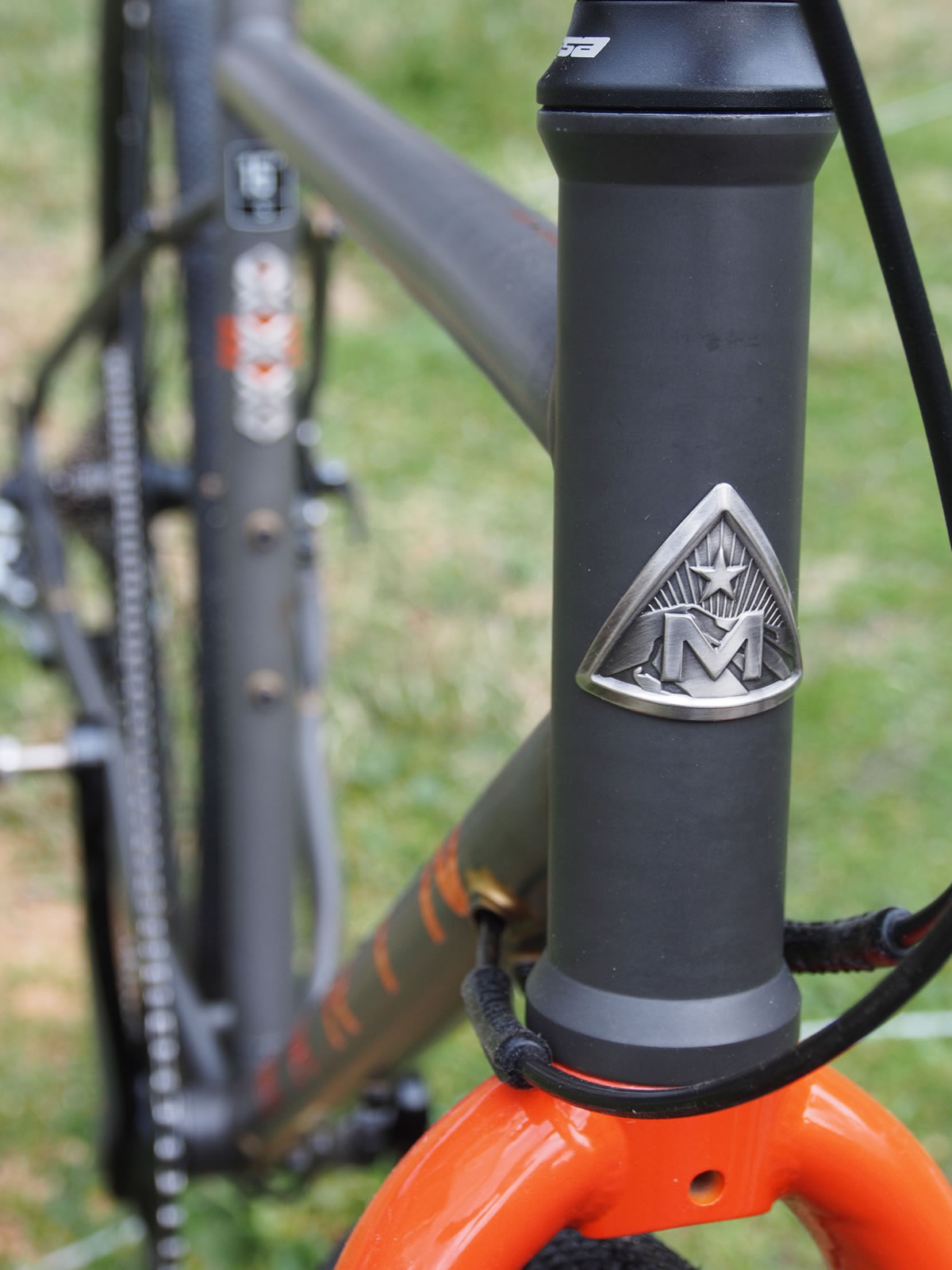WORDS AND PHOTOS BY KAREN BROOKS
£1,900 / €1,899 / $2,309
WEIGHT: 11KG // SIZE TESTED: SMALL
WWW.MARINBIKES.COM
It’s a good time to be an adventurous bike tourist. Thirty years ago, the Marin Four Corners was a standard steel touring rig made for sedate excursions on pavement; now the model has been transformed into an ‘all-road’ or ‘gravel’ or, as Marin calls it, a “utilitour” bike, with an enticing blend of road and off-road characteristics that remove many limits on where one can tour. The video on Marin’s website puts it best: “When all of the oil is gone and the pavement is lined with dead automobiles, you’ll be the most mobile of all the creatures left.”
The 2016 Four Corners Elite is still a bombproof steel rig meant to support long days (weeks, months) in the saddle. The frame is made of svelte Columbus Thron tubing, wearing nothing but a single clearcoat with racy orange accents and visible bronze brazing. Clever graphics details are hidden all over the bike. It’s a striking combination of new school and old. Salt-coated winter roads caused some spots of rust, but this patina will not go beyond the surface, and will add character as the bike ages.
Its 30th anniversary updates give it a playful capability on gravel and dirt: modern geometry with a sloping top tube and a comfortably upright position, frame clearance for 2.0″ knobby tyres, a wide range of gears executed with only one chainring, and the awesome stopping power of hydraulic disc brakes.
The update that most intrigued me was the wheels. Besides sporting tubeless-ready WTB KOM i21 rims, they use a new quick-release thru-axle system by Naild called 12.3.9. The numbers refer to the clock positions of the QR lever as the axle is installed: vertical (12 noon), turn 90° to the right (3 o’clock), then flip 180° to close. A small trigger tucked next to the lever locks it in place with a positive click. It’s an amazingly quick and easy system to use.
As the bike arrived on my doorstep in the heart of winter, I first put it to work as a commuter and weekend plaything, dressing it in full Fred-style fenders and lights. I immediately ditched the tubes—converting the Schwalbe G-One tyres to tubeless was hassle-free—and enjoyed the benefits immensely, rolling confidently on snow- and ice-covered roads with pressure as low as 20psi. (The sides of the tyres say to inflate to a minimum of 45psi, but as Dave Haygarth explained in issue 007, [Tubeless in the Saddle] you can safely go lower than that, lawyers be damned.)
The trails remained dry enough to have some fun, and the Four Corners obliged with a decently comfortable off-road position and confident stopping. The 40T chainring paired with the huge 10-42T cassette gave a good spectrum of gears for both road and trail, though I found myself topping out at times on pavement. It would be easy enough to swap in a larger chainring if desired; the frame also has mounting points for front derailleur cable guides, should you need even more range.
With spring flowers came thoughts of touring. My chosen route involved crushed limestone rail-trail, dirt and gravel roads, pavement, and some singletrack thrown in to spice things up. It was a perfect trip for the Four Corners: the bike was stable and sure-footed on every surface, and scoffed at the nasty sharp rocks and off-camber gravel I threw it at. True to form, the steel frame kept me from feeling too beat-up despite back-to-back 100+ mile days, and my position was comfortable enough to avoid neck-kink in the drops on long, loose descents. The frame gave a mere hint of back-end wiggle on one slightly absurd downhill, but I gladly took that in trade for comfort. The low-low gear allowed me to crawl up some ridiculous goat-trail-like ‘roads’ in the saddle, rather than get off and push, preserving morale.
The only thing that went awry with the bike was the front brake—by the end of the test it needed to be bled. For the mechanically inclined, this isn’t difficult. The Double-Tap shifting occasionally caused me mental pain when I accidentally shifted up, having reached the low end without realising it. These are small complaints given the excellent capability of the bike as a whole.
Marin has achieved a truly versatile and fun bike with few compromises, the sort of bike that motivates you to find excuses to ride. Marin offers more variations on this harmonious theme: the base model Four Corners has more traditional spec at less than half the price, and the Gestalt series features similar parts on an aluminium frame with more aggressive geometry.
